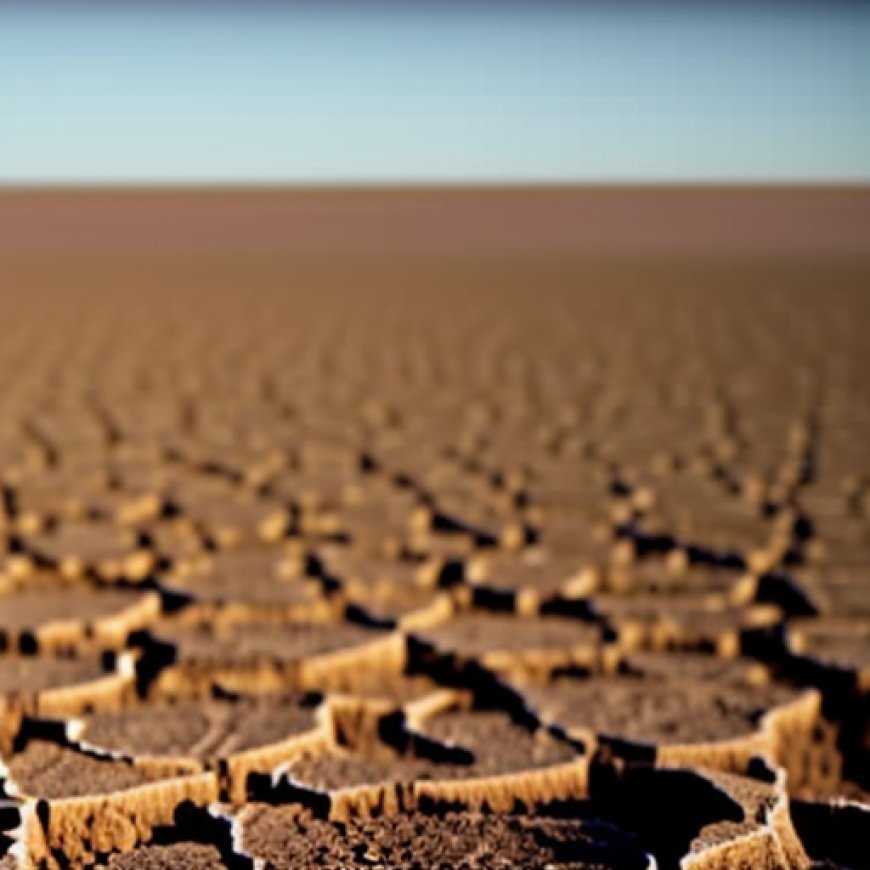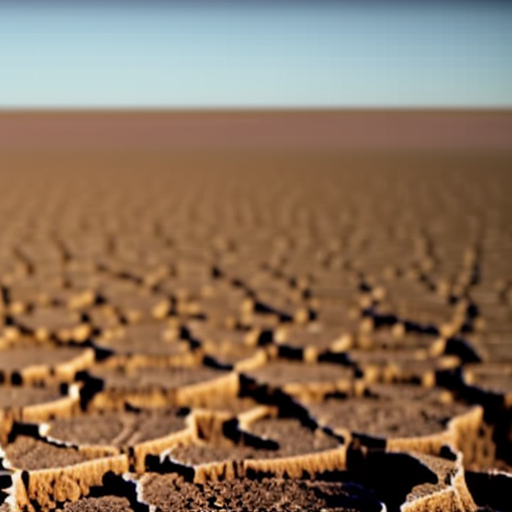Persistent drought in Kansas affecting aquifer levels
Persistent drought in Kansas affecting aquifer levels KSN-TV


Groundwater Levels and Drought in Kansas
WICHITA, Kan. (KSNW) – It is no secret that we have been battling a persistent drought across the state over the last few years. Has the influx of moisture we have gained so far this year helped our groundwater levels?
The Impact of Drought on Farmers
Significant improvements to our drought have been made over the last year here in Kansas. The drought monitor shows soil moisture, but it does not define the state of our groundwater levels.
“The problem was this was a drought that had been ongoing. So many farmers’ backs were completely against the wall. If you didn’t have any option of irrigation, you were just on dry land. You had no voice at all. You just missed out on the crop,” said KSN Agriculture Analyst John Jenkinson.
The Ogallala Aquifer and Water Usage
Many farmers in western Kansas saw failed wheat crops because of the lack of rain in early 2023. While some were able to pull from the Ogallala aquifer, irrigating with well water is costly, and water drained from the aquifer is capped.
“During the drought, many farmers were really pushed to the brink because you’re only allotted so many acre feet per well,” said Jenkinson.
The Ogallala is one of the largest aquifers in the world, and its levels are low. It has also taken a hit from the drought.
The Challenge of Recharging Aquifers
Most wells in western Kansas pull water directly from the aquifer, which cannot be refilled and restored easily.
“When we’re talking about recharge when it rains. You’ve got to get through the soil first, and you got to go through the unsaturated zone,” said Dr. Andrew Swindle, an associate professor at Wichita State University. “So when it rains, if it rains a little bit, it’s just going to soak into the ground, and it’s going to be dispersed in the soil.”
Even if we see a great deal of rainfall over the next several years, the Ogallala will not refill quickly.
“I’ve seen estimates that if we stopped using the aquifer, the Ogallala aquifer now, it would take somewhere in the neighborhood of 6,000 to 10,000 years to recharge,” said Dr. Swindle.
The Equus Beds Aquifer
This aquifer is roughly 100-300 feet below the surface. The Equus Beds aquifer in central Kansas is closer to the surface and smaller. This provides a different opportunity for recharging options.
“The Equus Beds is actually in really good shape, especially considering the drought,” said Don Henry, Assistant Director of Public Works and Utilities for the City of Wichita.
Wichita has been recharging the Equus Beds aquifer from the Arkansas River to help keep levels stable.
“We estimate the Equus Beds are more than 90% full right now,” said Henry. “The collaborative efforts of the Equus Beds and the city’s integrated local water supply plan has gone a long way in maintaining a health, sustainable aquifer in the Equus Beds.”
Drought Resilient Water Supply
This is all part of Wichita’s drought response plan.
“The city has two primary sources of water, the Equus Beds aquifer and the Cheney Lake Reservoir, and that’s about a 50/50 split,” said Henry.
This helps keep the city’s water supply drought-resilient. Right now, the drought monitor is in the best shape it has been in for years.
“This year, it actually looks like we are going to have a wheat crop,” said Jenkinson.
Preserving Aquifers and Crops
Kansas farmers are cautiously optimistic about this year’s crops. Any bit of moisture helps to preserve the aquifer and help their crops.
The biggest difference we can all make to preserve our aquifers is to cut back on irrigating our lawns this spring.
For more stories on Severe Weather Preparedness, click here.
SDGs, Targets, and Indicators Analysis
1. Which SDGs are addressed or connected to the issues highlighted in the article?
- SDG 6: Clean Water and Sanitation
- SDG 13: Climate Action
- SDG 15: Life on Land
The article discusses the issue of drought and its impact on groundwater levels, which is connected to SDG 6 (Clean Water and Sanitation). It also mentions the need for irrigation and the use of aquifers, which relates to SDG 13 (Climate Action) as it addresses the need for sustainable water management practices. Additionally, the article talks about the Ogallala aquifer, which is one of the largest aquifers in the world, highlighting the importance of preserving and managing natural resources, which aligns with SDG 15 (Life on Land).
2. What specific targets under those SDGs can be identified based on the article’s content?
- SDG 6.4: By 2030, substantially increase water-use efficiency across all sectors and ensure sustainable withdrawals and supply of freshwater to address water scarcity.
- SDG 13.1: Strengthen resilience and adaptive capacity to climate-related hazards and natural disasters in all countries.
- SDG 15.1: By 2020, ensure the conservation, restoration, and sustainable use of terrestrial and inland freshwater ecosystems and their services.
Based on the article’s content, the target under SDG 6.4 is relevant as it emphasizes the need for sustainable withdrawals and supply of freshwater to address water scarcity. The article discusses the challenges faced by farmers due to limited water availability and the need for irrigation. Achieving this target would help ensure efficient water use and sustainable water management practices.
The target under SDG 13.1 is also relevant as it focuses on strengthening resilience and adaptive capacity to climate-related hazards and natural disasters. The article highlights the impact of drought on farmers and the need for alternative water sources. Building resilience to drought and implementing strategies to mitigate its effects are crucial in addressing climate-related challenges.
Lastly, the target under SDG 15.1 is applicable as it emphasizes the conservation, restoration, and sustainable use of terrestrial and inland freshwater ecosystems. The article mentions the importance of preserving aquifers, such as the Ogallala aquifer, which plays a significant role in maintaining groundwater levels and supporting agricultural activities.
3. Are there any indicators mentioned or implied in the article that can be used to measure progress towards the identified targets?
- Water-use efficiency
- Resilience to climate-related hazards
- Conservation and restoration of freshwater ecosystems
The article does not explicitly mention specific indicators to measure progress towards the identified targets. However, some implied indicators can be inferred from the content. These include measuring water-use efficiency across sectors, assessing the resilience of communities and agricultural practices to climate-related hazards, and monitoring the conservation and restoration efforts of freshwater ecosystems.
Table: SDGs, Targets, and Indicators
| SDGs | Targets | Indicators |
|---|---|---|
| SDG 6: Clean Water and Sanitation | 6.4: By 2030, substantially increase water-use efficiency across all sectors and ensure sustainable withdrawals and supply of freshwater to address water scarcity. | – Water-use efficiency – Sustainable withdrawals and supply of freshwater |
| SDG 13: Climate Action | 13.1: Strengthen resilience and adaptive capacity to climate-related hazards and natural disasters in all countries. | – Resilience to climate-related hazards |
| SDG 15: Life on Land | 15.1: By 2020, ensure the conservation, restoration, and sustainable use of terrestrial and inland freshwater ecosystems and their services. | – Conservation and restoration of freshwater ecosystems |
Behold! This splendid article springs forth from the wellspring of knowledge, shaped by a wondrous proprietary AI technology that delved into a vast ocean of data, illuminating the path towards the Sustainable Development Goals. Remember that all rights are reserved by SDG Investors LLC, empowering us to champion progress together.
Source: ksn.com

Join us, as fellow seekers of change, on a transformative journey at https://sdgtalks.ai/welcome, where you can become a member and actively contribute to shaping a brighter future.







